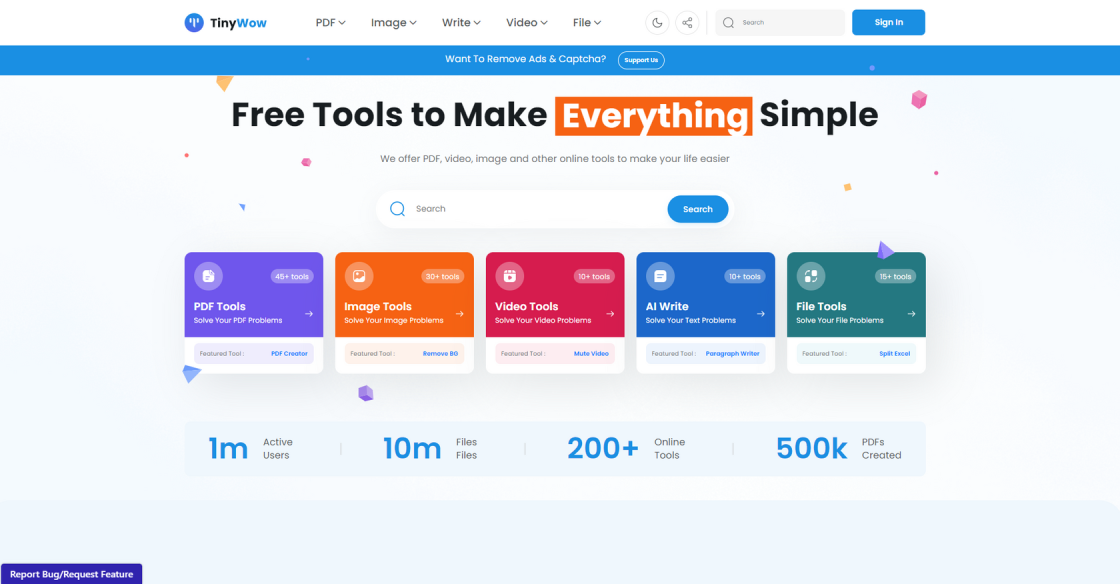

Are you ever stuck trying to come up with the perfect commit message? CommitGPT is here to help! CommitGPT is an innovative new service that uses ChatGPT to automatically generate messages for your commits. With CommitGPT, you can quickly and easily generate precise, meaningful commit messages every time.
Codex CLI is a powerful command line interface (CLI) tool that enables users to quickly and easily execute bash, ZShell, and PowerShell commands. By leveraging Codex, a natural language processing platform, Codex CLI enables users to write commands in a more intuitive, human-readable format. This makes it easier for both experienced and novice users to quickly create scripts, automate processes, and navigate the CLI environment.
SourceAI is an AI-Powered Code Generator that helps developers quickly generate code for their projects. With SourceAI, users can get a head start on their development process by creating custom code for their needs. The AI-powered code generator uses a range of algorithms and data to analyze user requirements and create the best possible code for their project. SourceAI makes it easy to create high-quality code quickly and efficiently.
Shumai (Meta) is an open source, fast, and powerful tensor library for software engineers and researchers. It is written in TypeScript (and JavaScript), and uses Bun + Flashlight to provide a comprehensive set of tools to easily create, modify, and optimize differentiable tensors across a network. With its intuitive and user-friendly interface, Shumai (Meta) is designed to help developers easily optimize their tensor operations to increase performance.
CheckForAI is a revolutionary new technology that can detect AI written text in essays and emails. This innovative approach combines Open AI's Roberta-base model for GPT detection with proprietary models developed by CheckForAI. With this combination of cutting-edge technologies, users can quickly and accurately identify AI generated text. CheckForAI is an invaluable tool for anyone who wants to ensure the authenticity of their written content.
CodeSquire is an AI code writing assistant that helps data scientists, engineers, and analysts write code quickly and accurately. It uses advanced algorithms to provide code completions and suggestions as you type, allowing users to work more efficiently and stay focused on the task at hand. With CodeSquire, you can quickly write code and produce reliable results with minimal effort.

Remove.bg
Remove Background from Image for Free – remove.bg

Wolframalpha
Wolfram|Alpha: Computational Intelligence

Zapier
OpenAI (Makers of ChatGPT) Integrations | Connect Your Apps with Zapier

GPT-3 Alzheimer
Predicting dementia from spontaneous speech using large language models | PLOS Digital Health

TinyWow
Free AI Writing, PDF, Image, and other Online Tools - TinyWow

PhotoRoom
PhotoRoom - Remove Background and Create Product Pictures

Caktus
AI solutions for students to write essays, discuss questions, general coding help and professional job application help.

Simplified
Free AI Writer - Text Generator & AI Copywriting Assistant
The Codex Command Line Interface (CLI) is an innovative tool that allows users to run commands in their command line shells such as Bash, ZShell, and Powershell using natural language. The CLI uses the Codex platform to interpret and transform natural language commands into their respective shell equivalents. This makes it possible for users to access and execute command line functions without needing to remember complex syntax or manually type out the commands. With the Codex CLI, users can quickly and easily run commands in their shell of choice without having to worry about syntax or memorizing commands. In addition, the Codex CLI provides a variety of helpful features such as autocompletion, context-aware auto-correct, and command history. With the help of the Codex CLI, users can easily navigate and execute commands in their shell with ease and efficiency.
Codex CLI is a CLI tool that uses Codex to turn natural language commands into their Bash/ZShell/PowerShell equivalents.
Codex CLI utilizes natural language processing technology to understand user commands and generate Bash/ZShell/PowerShell equivalents.
Codex CLI supports Bash, ZShell, and PowerShell.
Yes, Codex CLI is open source and can be found on GitHub.
Yes, Codex CLI is compatible with Windows.
No, Codex CLI does not require an internet connection to work.
Yes, Codex CLI has an easy-to-use interface and intuitive commands.
Yes, Codex CLI requires Python 3.6+ and pipenv to install.
Yes, Codex CLI uses natural language processing technology to understand user commands.
Yes, Codex CLI supports Bash, ZShell, and PowerShell.
| Competitor | Difference |
|---|---|
| BashKit | BashKit is a toolkit for creating Bash command line interfaces. It provides the ability to create menus, prompt users for input, perform validation, and much more. Unlike Codex CLI, BashKit doesn't use natural language processing to convert commands into their equivalent Bash/ZShell/PowerShell equivalents. |
| ZshKit | ZshKit is a toolkit for creating ZShell command line interfaces. It provides the ability to create menus, prompt users for input, perform validation, and much more. Unlike Codex CLI, ZshKit doesn't use natural language processing to convert commands into their equivalent Bash/ZShell/PowerShell equivalents. |
| PowerShellKit | PowerShellKit is a toolkit for creating PowerShell command line interfaces. It provides the ability to create menus, prompt users for input, perform validation, and much more. Unlike Codex CLI, PowerShellKit doesn't use natural language processing to convert commands into their equivalent Bash/ZShell/PowerShell equivalents. |
Codex CLI is a command line interface (CLI) tool that allows users to turn natural language commands into their Bash, ZShell, or PowerShell equivalents. This enables users to quickly and easily create scripts and automate tasks without having to learn a programming language. With Codex CLI, users can write natural language commands such as "move all files from one folder to another" and Codex CLI will automatically translate it into the appropriate Bash/ZShell/PowerShell commands.
Codex CLI is designed to be easy to use, even for those with no prior experience in coding or scripting. It has an intuitive user interface that makes it easy for users to get up and running quickly. Furthermore, Codex CLI has a range of features that can help users create more powerful scripts and automate more complex tasks. For instance, users can use variables and conditionals to create scripts that can adapt to changing conditions.
Finally, Codex CLI is highly extensible and customizable, allowing users to extend the functionality of the CLI tool and add new features. By using plugins, users can add additional commands and functions, make their scripts more powerful, and increase their productivity.
TOP